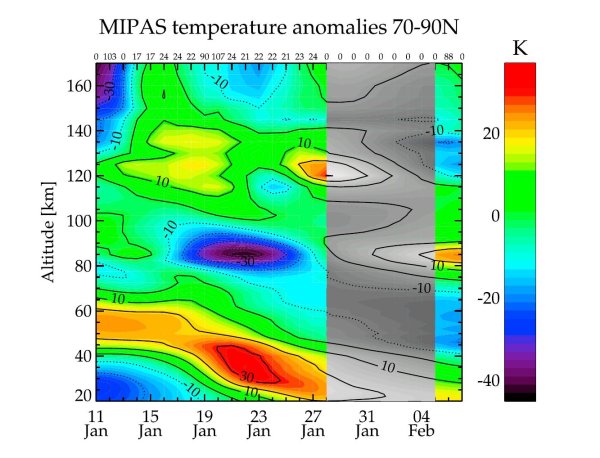MIPAS provides first observational evidence of the coupling from the lower atmosphere to the thermosphere during a major stratospheric warming
The figure shows the temperature evolution of the Arctic polar winter atmosphere
We used temperature data from the Michelson Interferometer for Passive Atmospheric Sounding on board ESA's Envisat satellite to analyze the temperature responses in the mesosphere and thermosphere up to 170 km to a major stratospheric sudden warming (SSW) which occurred in January 2009. The temperature observations show clear signatures of a mesospheric cooling and a thermospheric warming, the latter peaking at 120–140 km in agreement with model predictions. From the analysis of the zonal temperature structure during the SSW a pronounced wave 1 pattern was found in the entire middle and upper polar atmosphere with maximum amplitudes around
Temperature in the upper atmosphere is retrieved from CO2 lines up to
The observational data have been recorded by MIPAS in its Upper Atmosphere observation mode which covers the altitude range of
For further details see:
http://www.agu.org/pubs/crossref/2010/2010GL043619.shtml
http://www.agu.org/pubs/crossref/2005/2004JD005225.shtml
http://www.agu.org/pubs/crossref/2000/1999JD900822.shtml

